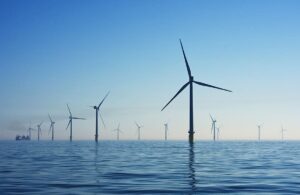 by Bill O’Keefe
by Bill O’Keefe
With the two chambers of the General Assembly politically divided, there is no hope for a bipartisan compromise on changing the Virginia Clean Economy Act. Without change, we are stuck with a radical energy policy that will enrich Dominion and leave consumers holding the bag. VCEA will stand as a monument to hubris.
There is one course of action that the Democrat-controlled Senate might be willing to accept, and that is subjecting Dominion’s approach to a “Red Team” review. If the GA can’t agree to do that type of review, the SCC could undertake it on its own.
The “Red Team” concept was developed by the Department of Defense to provide a means to realistically validate the strength and quality of strategies or policies by employing an outside perspective. A Red Team’s review evaluates whether a proposal is robust and complete. The use of red teaming has expanded broadly within government and the private sector.
Dominion and the Democrat Senate are by now so deeply committed to the offshore wind farm and to the VCEA mandates that it is impossible for either to take a fresh, objective look at either.
There are a number of reasons why a “Red Team” analysis is needed.
First and foremost is EU experience with the shift to wind power. The assumptions behind the EU policy are not being borne out. Prices are rising; not falling. Companies building wind and solar facilities are asking for greater subsidies. The problems confronting Europe are documented in the March 7 issue of Newsweek, which describes the situation as an energy crisis. This raises an important question: why, if claims that the prices of renewable energy are falling and projected to continue to fall, do companies need more government funding? The logical fallacy should be obvious.
A study by the Fraser Institute concluded that proponents of renewable energy rely on unrealistic assumptions. It examined what would happen in countries where renewables are not sufficient to meet the demand for electricity and concluded that there would be an increase in blackouts.
The Brookings Institution also did a study titled “The Fantasy of Quick and Easy Renewable Energy” which challenges the objective of becoming carbon-free. It cites the Proceedings of the National Academies of Science, which concluded that the notion was based on overly optimistic analyses and assumptions. The electrical grid has to be able to balance supply and demand 24 hours a day. The Proceedings point out that balance is an enormous challenge given the intermittent and non-dispatchable nature of wind and solar power. “To meet that challenge, there needs to be a nationally integrated electric grid, and vast amounts of load shifting to times when more power is available.… No battery storage system exists that approaches the needed scale.” Today’s batteries are based on lithium-ion technology, which has a storage limit of about four hours. As the Spectator-Australia has written:
Possibly the most powerful argument against the quest for Net Zero can be briefly stated using the Iron Triangle of Power Supply, bearing in mind the logic of testing (or falsification, as Karl Popper called it).
The three aspects of the triangle are:
Continuous input of power to the grid. Adequate input is required all the time, not just most of the time or almost all the time.
Wind droughts and especially windless nights break the continuity of input from wind power when there is no solar.
There is effectively no storage to bridge the gaps (despite all the talk about batteries and pumped hydro).Consequently, the proposition that the grid can run on wind and solar power is falsified (ruled out) and there is no justification for the decision.
These analyses and others were recently confirmed by a report released last week by PJM Interconnection, which includes Dominion as a member. The report concluded that “Fossil-fuel plants are retiring faster than renewable sources are getting developed.” PJM predicts that twice as much power generation will be retired by 2030 as wind and solar will be added.
PJM is not alone in its warning. Late last year, the Electric Power Research Institute (EPRI) and the North American Electric Reliability Corporation issued reports with warnings about reliability risks due to an imbalance in matching retirements with new sources and the potential lack of technologies to meet decarbonization goals
The importance of electricity to consumers and the economy is too great to let ideology get in the way of fact-based decisions. The reaction to the perceived climate-change threat must be politically durable and economically realistic. Unnecessarily limiting the energy transition to politically favored technologies, making assumptions that are not credible, and pretending that the solutions are cheap and easy guarantee that we will face an energy debacle. And when that day comes, shortfalls will limit us to three possible options: import from other states at a premium price if excess is available, blackouts, or instituting demand management, where Dominion determines how much electricity we can use and when.
This situation is reminiscent of Woody Allen’s comment that “Mankind is facing a crossroad — one road leads to despair and utter hopelessness and the other to total extinction — I sincerely hope you graduates choose the right road.”
We need an energy Red Team badly.
Bill O’Keefe is a former executive vice president of the American Petroleum Institute and founder of Solutions Consulting.

Leave a Reply
You must be logged in to post a comment.